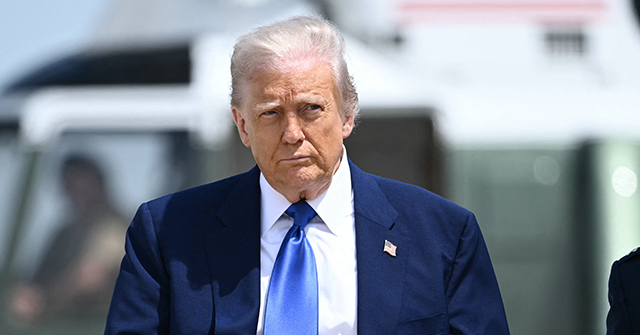Tarifflation Keeps Refusing to Happen
If the tarifflation alarmists were right, we should have seen the proof by now.
April’s inflation reports were supposed to show the U.S. consumers were bearing the burden of President Trump’s new tariffs. The ten percent universal duty on imports and targeted higher rates on dozens of countries took effect April 2. That gave a full month for cost pressures to show up.
They didn’t.
Wall Street analysts thought the consumer price index would rise 0.3 percent but it edged up 0.2 percent. That’s after prices fell in March and rose just 0.2 percent in February. On a three-month, annualized basis, inflation is running at 1.2 percent.
The producer price index (PPI) for final demand was expected to rise 0.2 percent. Instead, on Tuesday the Department of Labor said PPI fell 0.5 percent in April, the sharpest monthly decline since the early pandemic period. Core PPI (excluding food, energy, and trade services) edged down 0.1 percent—the first monthly decline in five years. Final demand goods prices were flat. Energy prices dipped. Food prices fell.
If tariffs were triggering a new inflationary wave, someone forgot to tell the businesses setting prices for goods and the consumers buying them.
Margin Compression Shows Businesses Absorbing Tariffs
A significant contributor to the decline was a 1.6 percent drop in final demand trade services margins—a category that measures retailer and wholesaler markups, not product prices themselves. This is critical: it tells us businesses are not passing along cost increases to consumers. They’re absorbing them.
The PPI is unique in this respect. Unlike the CPI, which tracks shelf prices paid by consumers, the PPI separates out trade margins. It measures the profit wholesalers and retailers make from reselling a product, calculated as the difference between their selling price and what they paid for the item. This is considered the price of the service of retailing and wholesaling.
If tariffs were being passed directly to the consumer, we’d expect to see stable or rising trade margins. But they’re going down.
More than 40 percent of the April drop in services came from collapsing margins in machinery and vehicle wholesaling, down a stunning 6.1 percent. Those are categories that were directly impacted by tariffs.
Other key contributors to the decline included food and alcohol wholesalers, portfolio managers, and airline services. Margin pressure is broad-based. That means companies are unlikely to discover they have pricing power to raise prices to compensate for the tariff hikes.
In other words: Companies are being squeezed, not consumers.
Tariff Effects Further Up the Chain
We do see signs of tariff-related price increases further back in the production process. In PPI for intermediate demand—which measures prices paid by businesses further out on the production chain—prices for key industrial metals rose sharply. The index for steel mill products rose 5.9 percent. The index for unprocessed nonferrous metal ores (which includes tariffed aluminum) rose 7.5 percent. Nonferrous wire and cable prices were up 3.7 percent. Cold-rolled steel climbed 9.4.
These are exactly the kinds of goods most directly affected by the Section 232 steel and aluminum tariffs, and they suggest that some cost pressure is building at the input level. But here’s the key: it’s not filtering through.
Despite rising metals prices, final goods prices remain flat, and retailers are compressing margins to avoid pushing costs onto consumers. Even within intermediate demand, we can see evidence of this. Prices of fabricated metal structures were up by a lot less than the metals themselves. This is tariff pressure being absorbed, not passed through.
So while the tariff inflation story may begin in the metals market, it stops at the warehouse door.
Margin Compression, Not Inflation
This supports a point we’ve made again and again: Tariffs do not automatically lead to inflation. That’s a theoretical assumption made by many economists and pundits, not an empirical reality.
Yes, tariffs can raise import costs. But whether those costs are passed through to consumers depends on competitive dynamics, consumer behavior, and business strategy. Right now, there is very little pass-through. Instead, we’re seeing margin compression.
This was already evident in the April CPI, which goods inflation was essentially flat. Apparel and flatware—categories heavily exposed to trade—fell in price. Prices for jewelry and watches—a category dominated by imports from heavily tariffed countries, including China—dropped 1.9 percent. New car prices did not budge. April’s PPI reinforces that story.
The biggest critique of Trump’s tariff policy has always been inflation. We were told it would hit consumers like a hidden tax. Kamala Harris repeatedly called it a national sales tax.
But both CPI and PPI say otherwise. Prices are steady. Services are cooling. Margins are contracting. Inflation is not being fueled—it’s being swallowed.
That doesn’t mean tariffs are painless. Squeezed margins can mean slower hiring, delayed investment, and cautious pricing strategies. But that’s a very different macroeconomic story than the one being pushed by the tariff scaremongers. And it is one that we can respond to by cutting other costs for business, including regulations and taxes.
Tariffs are still ramping up. At some point, we will likely see some tariff-induced price hikes filter down to consumers. But these are likely to be one-time relative prices changes that are offset by declines elsewhere rather than persistent upward moves in the general price level.
Read the full article here
